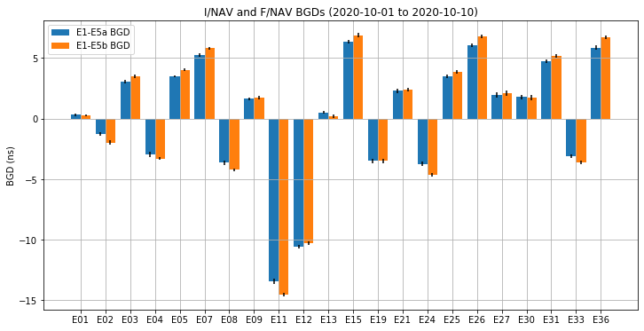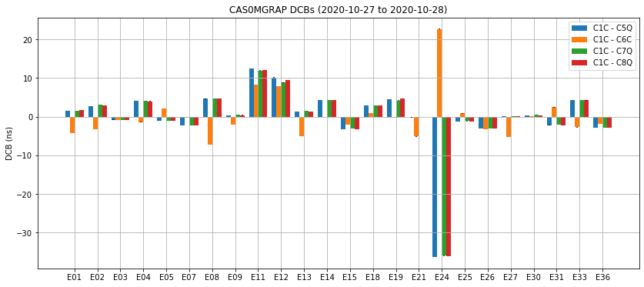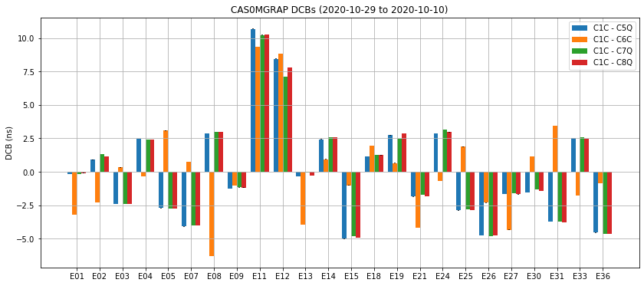Back in July, I wrote about how the Galileo E24 differential code biases were abnormally large in comparison to other satellites from the constellation. This was initially noticed by Bert Hubert from galmon.eu in the large size of the BGDs of this satellite. In that post I did a study of the DCB products from the Chinese Academy of Science and the broadcast ephemeris BGDs, and explained the relation between them.
At the end of September, Bert tweeted that after some maintenance the BGDs of E24 had stopped being so large. That is not so surprising, since the payload on-board the satellite can adjust the relative delays between each of the navigation signals, in order to correct these kinds of problems.
After letting a few weeks go by so that the MGEX products get uploaded, I have now redone some of the plots in that study with the data surrounding the change.
The figure below shows the BGDs for E24 taken from the BRDM ephemeris. It shows clearly the outage period caused by the maintenance, and how the satellite comes back with large BGDs, but these quickly go back to something small, around -5ns.

We can compare the BGDs before the change with those after the change. We see that the large BGDs of E24 have disappeared and the satellites with largest BGD are now E11 and E12, which are the two oldest satellites.


Looking at the DCBs, we see the change between October 28 and 29. The DCB for C1C-C6C, which is not observable through the Open Service ephemerides has also changed from a large value to something close to zero.

If we compare the DCBs of all the constellation, we see that the large DCBs from E24 have disappeared, while the DCBs of E11 and E12, which are around 10ns, remain. All the satellites besides E24 have not changed significantly.


The data, code and plots for this post can be found in this Jupyter notebook.